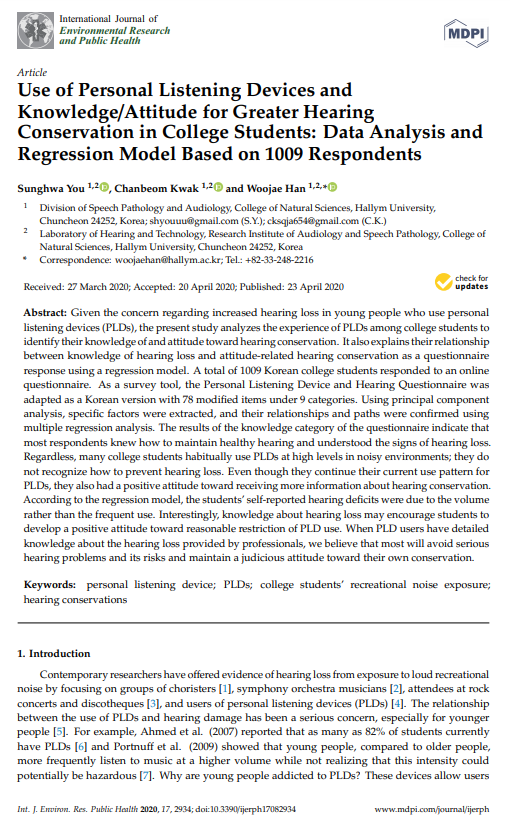Use of Personal Listening Devices and Knowledge/Attitude for Greater H…
페이지 정보
- 최고관리자
- 23-05-31
- 2,589 views
- 2020
본문

Given the concern regarding increased hearing loss in young people who use personal listening devices (PLDs), the present study analyzes the experience of PLDs among college students to identify their knowledge of and attitude toward hearing conservation. It also explains their relationship between knowledge of hearing loss and attitude-related hearing conservation as a questionnaire response using a regression model. A total of 1009 Korean college students responded to an online questionnaire. As a survey tool, the Personal Listening Device and Hearing Questionnaire was adapted as a Korean version with 78 modified items under 9 categories. Using principal component analysis, specific factors were extracted, and their relationships and paths were confirmed using multiple regression analysis. The results of the knowledge category of the questionnaire indicate that most respondents knew how to maintain healthy hearing and understood the signs of hearing loss. Regardless, many college students habitually use PLDs at high levels in noisy environments; they do not recognize how to prevent hearing loss. Even though they continue their current use pattern for PLDs, they also had a positive attitude toward receiving more information about hearing conservation. According to the regression model, the students' self-reported hearing deficits were due to the volume rather than the frequent use. Interestingly, knowledge about hearing loss may encourage students to develop a positive attitude toward reasonable restriction of PLD use. When PLD users have detailed knowledge about the hearing loss provided by professionals, we believe that most will avoid serious hearing problems and its risks and maintain a judicious attitude toward their own conservation.
Citation
You, S., Kwak, C., & Han, W. (2020). Use of personal listening devices and knowledge/attitude for greater hearing conservation in college students: Data analysis and regression model based on 1009 respondents. International journal of environmental research and public health, 17(8), 2934.